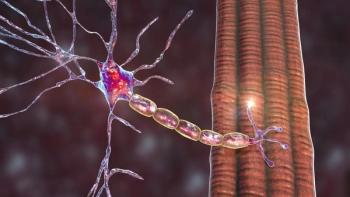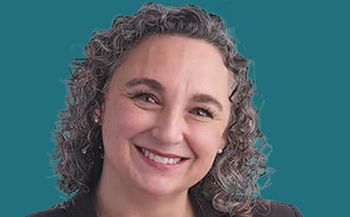
Cilta-cel Achieves High Rates of MRD Negativity in Early-Line Multiple Myeloma
The long-term data comes from 2 cohorts in the phase 2 CARTITUDE-2 clinical trial.
Janssen’s and Legend Biotech's ciltacabtagene autoleucel (cilta-cel; marketed as Carvykti), which is an FDA-approved BCMA-directed autologous chimeric antigen receptor T-cell (CAR-T), has demonstrated the ability to generate high rates of minimal residual disease (MRD) negativity among patients with multiple myeloma (MM) treated in an early line setting. The data, which come from cohorts A and B of the phase 2 CARTITUDE-2 clinical trial (NCT04133636), were reported in an oral presentation at
Cohort A in CARTITUDE-2 included patients with MM who were lenalomide-refractory after 1 to 3 prior lines of therapy that included a proteosome inhibitor (PI) and an immunomodulatory drug (IMiD). Cohort B included patients with MM who had a relapse within 12 months after receiving either autologous stem cell transplant or 1 prior line of therapy that included a PI and an IMiD.The median follow-up for patients in cohorts A and B was approximately 29 months.
MRD negativity was assessed at a threshold of 10-5. In cohort A, 17 of 17 patients (100%) evaluable for MRD negativity achieved it. In cohort B, 14 of 15 patients (93.3%) evaluable for MRD negativity achieved it. Furthermore, 8 of 11 patients in cohort A (72.7%) evaluable for sustained MRD negativity at 6 or more months posttreatment achieved this, and 7 of 14 patients in cohort A (50%) evaluable for sustained MRD negativity at 12 or more months posttreatment achieved it. For cohort B, 10 of 13 (76.9%) evaluable patients showed sustained MRD negativity at 6 or more months, and 8 of 13 (61.5%) showed sustained MRD negativity at 12 or more months. Among the 20 patients total treated in cohort A, the overall response rate (ORR) was 95% and 90% of patients achieved a complete response (CR) or better. Among 19 patients total treated in cohort B, the ORR was 100% and 89.5% achieved a CR or better. The median duration of response was not reached, but a landmark analysis conducted at 24 months posttreatment revealed that 73.3% of patients (95% CI, 47.2-87.9) in cohort A and 70.5% of patients (95% CI, 42.5-86.7) in cohort B remained in remission. For cohort A the 24-month progression-free survival (PFS) rate was 75% (95% CI, 50.0-88.7) and the 24-month overall survival (OS) rate was 75% (95% CI, 50.0-88.7). For cohort B the 24-month PFS rate was 73.3% (95% CI, 47.2-87.9) and the 24-month OS rate was 84.2% (95% CI, 58.7-94.6).
In terms of safety, hematologic treatment-emergent adverse events (TEAEs) were the most common in both cohorts A and B. In cohort A, 95% of patients experienced cases of neutropenia, all of which were grade 3/4. In cohort B, 94.7% of patients experienced cases of neutropenia, all of which were also grade 3/4. Notably, 1 patient in cohort A showed a case of a second primary malignancy (grade 3 mucoepidermoid carcinoma) and 2 patients in cohort B showed cases of secondary malignancy (grade 2 prostate cancer and grade 4 choroid melanoma, respectively). In cohort A, 3 patients died from progressive disease (PD), 1 died from sepsis, and 1 died from pneumonia. In cohort B, 3 patients died from PD and 1 died from cardiac arrest. Jens Hillengass, MD, PhD, a professor of oncology and internal medicine at Roswell Park Comprehensive Cancer Center, who presented the data, noted that the second primary malignancies and the patient death from cardiac arrest are not thought to be related to the CAR-T treatment.
Cases of cytokine release syndrome (CRS) were observed in 19 patients (95%) in cohort A and 16 patients (84.2%) in cohort B. Cases of immune effector cell-associated neurotoxicity syndrome (ICANS) were observed in 3 patients (15%) in cohort A and in 1 patient (5.3%) in cohort B. CAR-T cell neurotoxicity cases were observed in 6 patients (30%) in cohort A and 6 patients (31.6%) in cohort B. Other neurotoxicities were observed in 3 patients (15%) in cohort A and 5 patients (26.3%) in cohort B. All cases of CRS and ICANS were resolved in both cohorts. Two of 3 cases of other neurotoxicities were resolved in cohort A and 3 of 5 cases of other neurotoxicities were resolved in cohort B. Notably, a movement and neurocognitive (MNT) TEAE was observed in 1 patient in cohort B and was not resolved. In response to an audience question after the presentation, Hillengass emphasized the importance of learning more about the risk for MNT cases when using CAR-T in early lines of treatment.
The ages of the patients in cohort A ranged from 38 to 75 years (median, 60) and the ages of the patients in cohort B ranged from 44 to 67 years (median, 58). Three patients in cohort A (15%) and 3 in cohort B (15.8%) had extramedullary plasmacytomas at baseline. Furthermore, 7 patients (35%) in cohort A and 3 patients (15.8%) in cohort B had high risk cytogenetics at baseline. In cohort A, patients had received 1 to 3 prior lines of therapy (median, 2). In cohort B all patients had received exactly 1 prior line of therapy as per aforementioned inclusion criteria for that cohort.
“We think this shows that early introduction of cilta-cel in these patient cohorts is very promising,” Hillengass concluded his presentation. “As you know CARTITUDE-4 (NCT04181827),a phase 3 study, has also looked into these early lines of therapy [for cilta-cel].”
REFERENCES
1. Hillengass J, Cohen AD, Agha ME, et al. The phase 2 CARTITUDE-2 trial: updated efficacy and safety of ciltacabtagene autoleucel in patients with multiple myeloma and 1–3 prior lines of therapy (cohort A) and with early relapse after first line treatment (cohort B). Presented at: 2024 Tandem Meetings, February 21-24, San Antonio, Texas. Abstract #42
Newsletter
Stay at the forefront of cutting-edge science with CGT—your direct line to expert insights, breakthrough data, and real-time coverage of the latest advancements in cell and gene therapy.











































